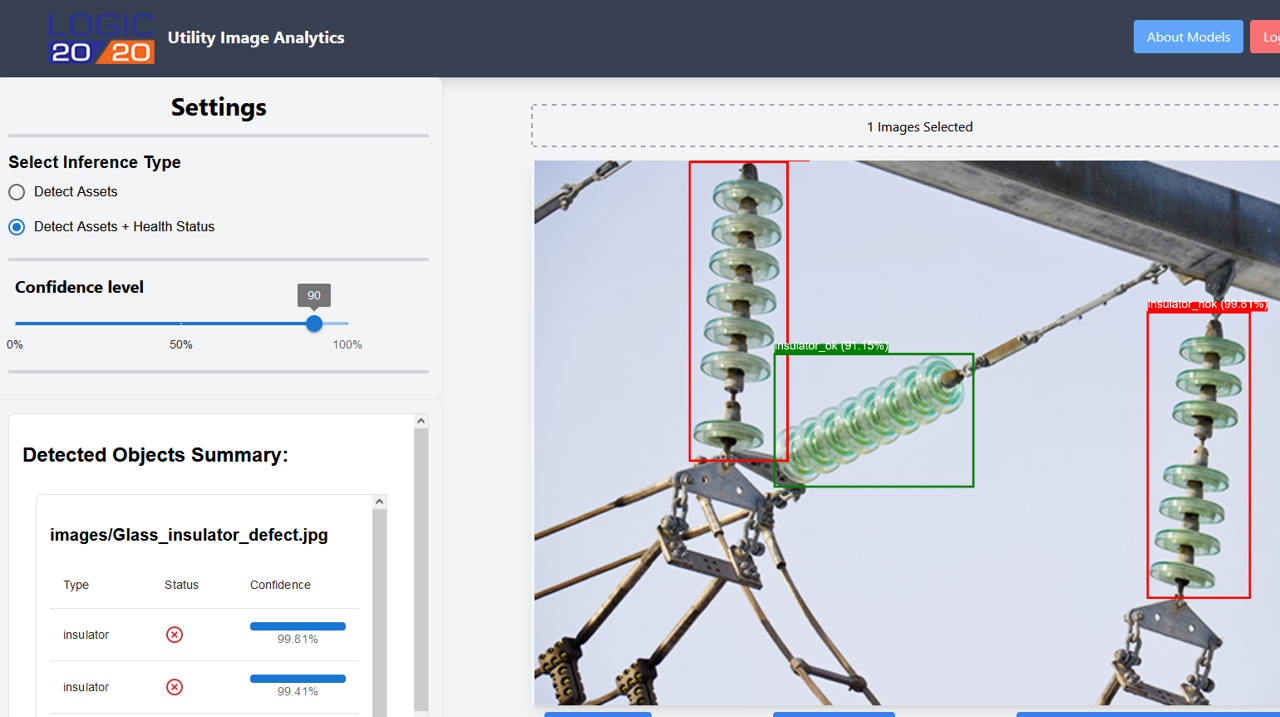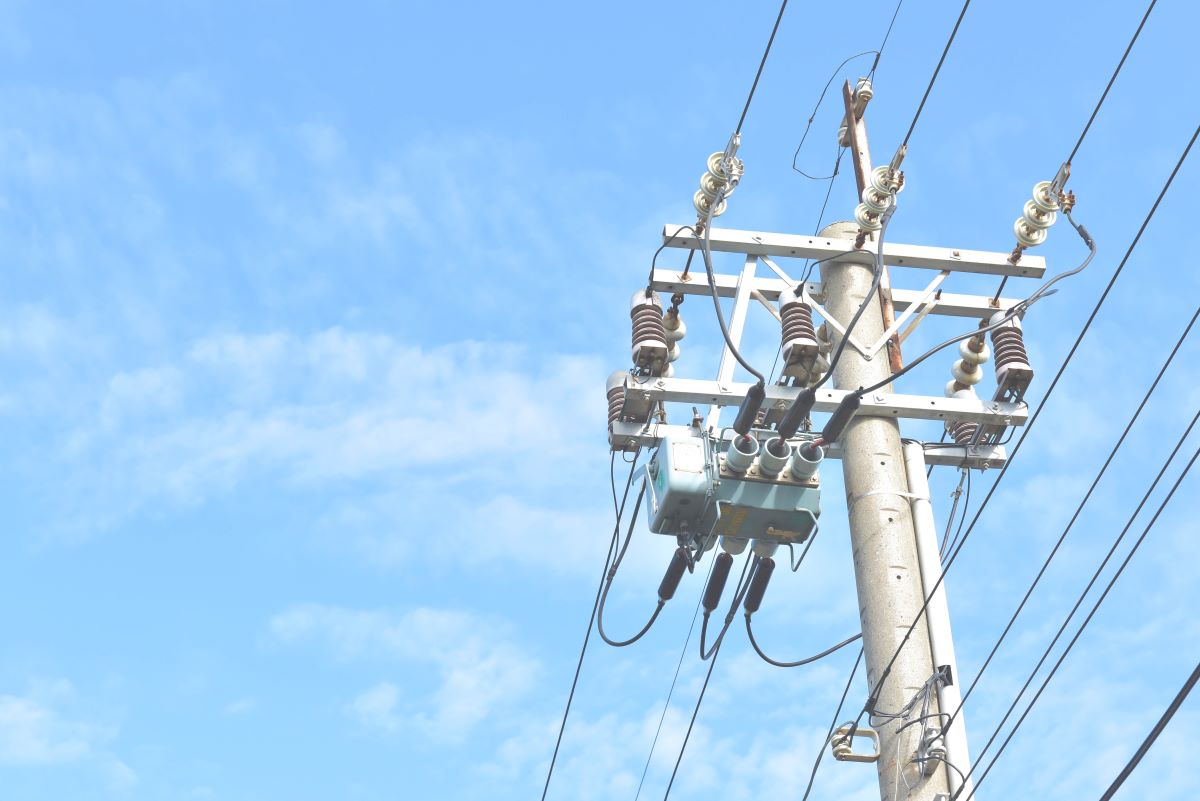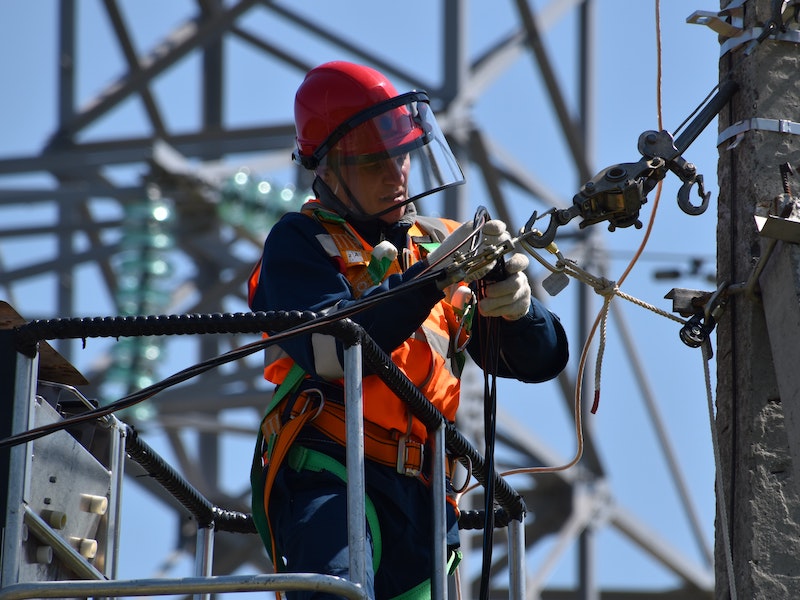Utility Asset Management
Leveraging AI and machine learning to optimize asset performance
Many of the nation’s transmission and distribution lines, constructed primarily in the 1950s and 60s, are nearing the end of their designed lifespans, intensifying utilities’ maintenance challenges. As providers grapple with this reality—alongside the integration of distributed energy resources (DERs), rising electrification, and escalating natural disasters—an urgent need for innovative utility asset management solutions and strategies has become apparent.
Logic20/20 leverages the latest technologies, including AI, machine learning, and advanced analytics, to help utilities address these modern challenges and ensure resilience, reliability, and optimized performance of their infrastructure assets. These technologies can be used to calculate important metrics such as health scores, criticality, and risk values by comprehensively assessing asset performance and failure probabilities.
Challenges of managing aging infrastructure in utility asset management
Aging infrastructures
Rising electrification
Increasing demand for resilience and reliability
Escalating climate events
DER integration
WEBINAR
How asset image analytics supercharges utility operations
WHITE PAPER
Transforming utility operations with asset image analytics
Creating a utility asset management plan
A well-structured utility asset management plan is essential for optimizing asset performance, minimizing risks, and ensuring long-term reliability. By taking a strategic approach, utilities can proactively manage aging infrastructure, reduce operational costs, and improve service continuity. The sections below outline key considerations and best practices for building an effective plan.
Importance of a structured approach
Creating a utility asset management plan is crucial for organizations to effectively manage their assets, reduce costs, and improve overall efficiency. A structured approach enables providers to visualize their assets, identify potential risks, and develop strategies to mitigate them. By implementing a comprehensive plan, utilities can enhance their ability to manage aging infrastructure, reduce the likelihood of breaks and outages, and improve customer satisfaction. This structured approach not only helps in managing current assets, but also prepares the organization for future challenges, ensuring long-term sustainability and reliability.
Key components of an effective plan
An effective utility asset management plan should include five key components::
- Asset inventory: A comprehensive inventory of all assets, including their location, condition, and maintenance history. This inventory serves as the foundation for all asset management activities.
- Risk assessment: A thorough assessment of potential risks associated with each asset, including the likelihood and impact of failure. This helps in prioritizing maintenance and replacement activities.
- Maintenance strategy: A well-defined maintenance strategy that outlines the frequency and type of maintenance required for each asset. This ensures that assets are maintained in optimal condition, reducing the risk of unexpected failures.
- Investment planning: A plan for investing in new assets, upgrading existing ones, and replacing those that are no longer viable. This ensures that the utility’s infrastructure remains up-to-date and capable of meeting future demands.
- Performance monitoring: A system for monitoring asset performance and tracking key performance indicators (KPIs). This helps in identifying trends and making data-driven decisions to optimize asset management.
By incorporating these components, utilities can develop a robust asset management plan that enhances their ability to manage their assets effectively.
How we can help with asset management for utilities
At Logic20/20, we recognize the complexities utilities face in managing aging infrastructure while adapting to modern demands such as distributed energy resources, increased electrification, and the challenges posed by natural disasters. Our utility asset management services address these challenges effectively through AI, machine learning, advanced analytics, and other cutting-edge technologies.
Drone and AI integration for asset inspection
Our asset inspection solutions utilize drone imagery, among other imagery sources, and AI-driven analytics to reduce the need for physical inspections, lower costs, and increase the coverage and accuracy of asset health assessments. Drones capture high-resolution images from multiple angles, and AI algorithms analyze these images to detect defects and assess overall asset conditions.
Machine learning for predictive maintenance
Our data science team develops tailored machine learning models that can predict electric utility asset failures and suggest preventive maintenance schedules. Based on historical data and real-time inputs, these models allow utilities to anticipate issues before they can lead to service interruptions. Providers can extend the lifespan of their assets and minimize the potential for unexpected breakdowns.


Asset data remediation
For situations in which the exact location of assets may be uncertain, our team develops solutions that
- Automatically pull asset location data from drone images and compare the location in the GIS system
- Generate reports to identify assets that have different locations and provide the information necessary to remediate
Effective documentation is crucial in organizing and streamlining existing systems related to maintenance, finance, and procurement within a comprehensive tool.
Advanced analytics to visualize asset insights
We leverage our extensive experience in data science to provide utilities with actionable insights into asset health and risks. Our approach includes designing and developing comprehensive reports and dashboards that track asset data quality and provide critical management insights. These tools help utilities prioritize maintenance and replacement schedules effectively, reducing the risks of failures and optimizing the use of operational resources.

Case studies
Logic20/20 helps providers leverage technology to optimize utility asset management.

Featured
Mitigating wildfire risk with computer vision–aided asset management

Featured
Preventing wildfire and protecting public safety with cloud-based machine learning
Implementing and integrating an asset management plan
Strategies for successful deployment
Implementing a utility asset management plan requires careful planning, execution, and integration with existing systems and processes. Here are some strategies for successful deployment:
Start small
Engage stakeholders
Use the right tools
Provide training and support
Monitor progress
Utilities vegetation management
U.S. utilities spend nearly $7 billion every year on the maintenance required to prevent vegetation from disrupting services. Find out how Logic20/20 delivers the technologies and expertise needed for effective, efficient vegetation management.

Let’s talk about asset management inspection platforms for your utility.

